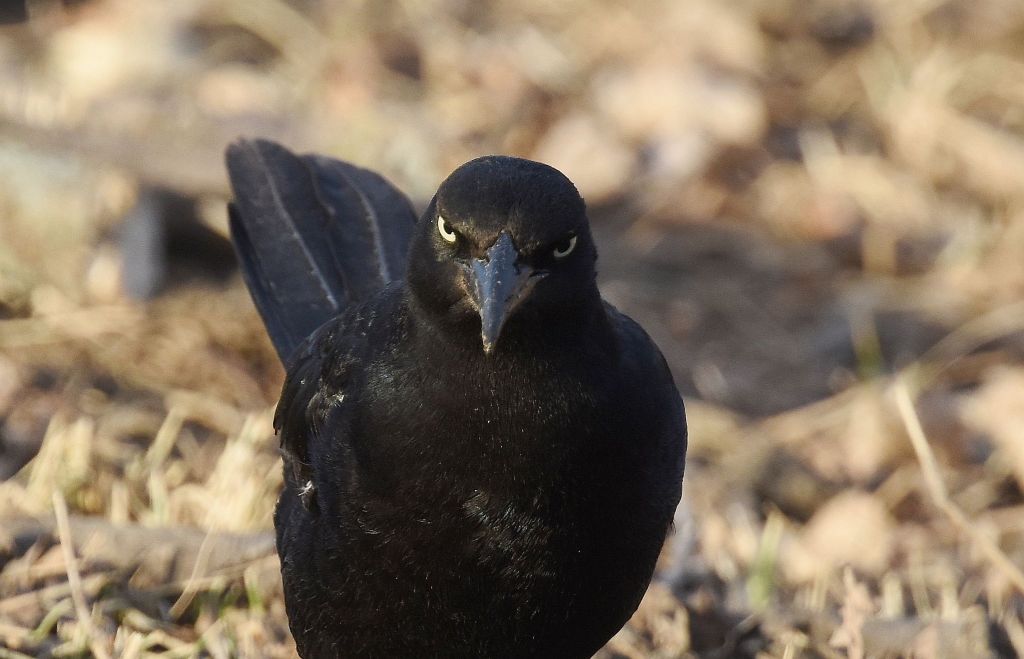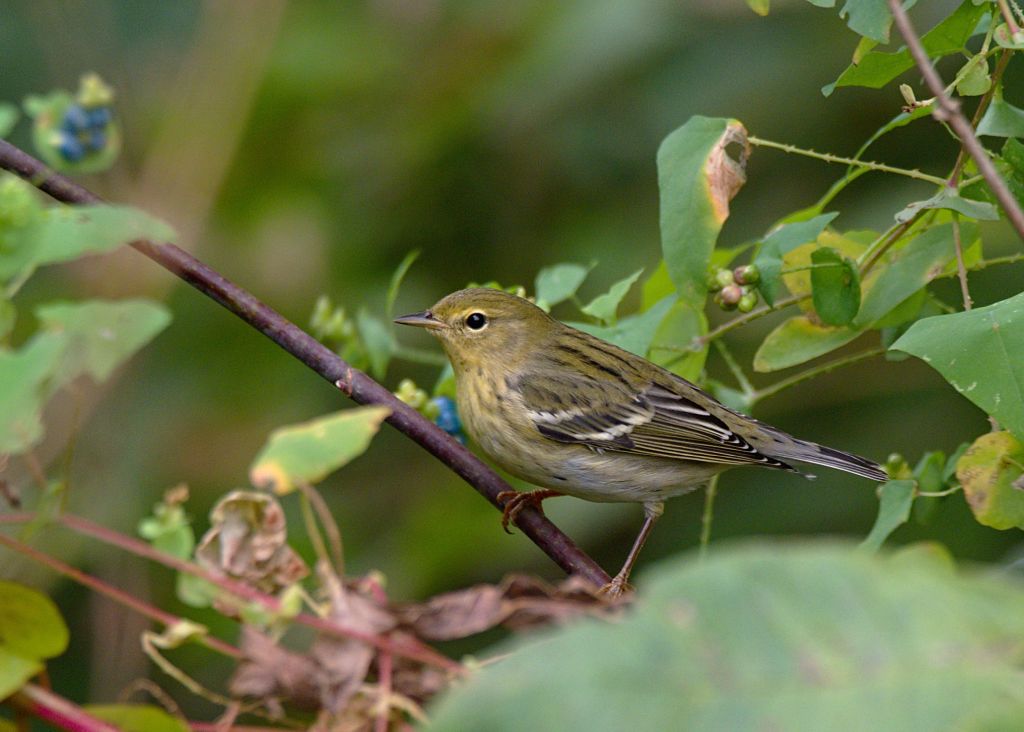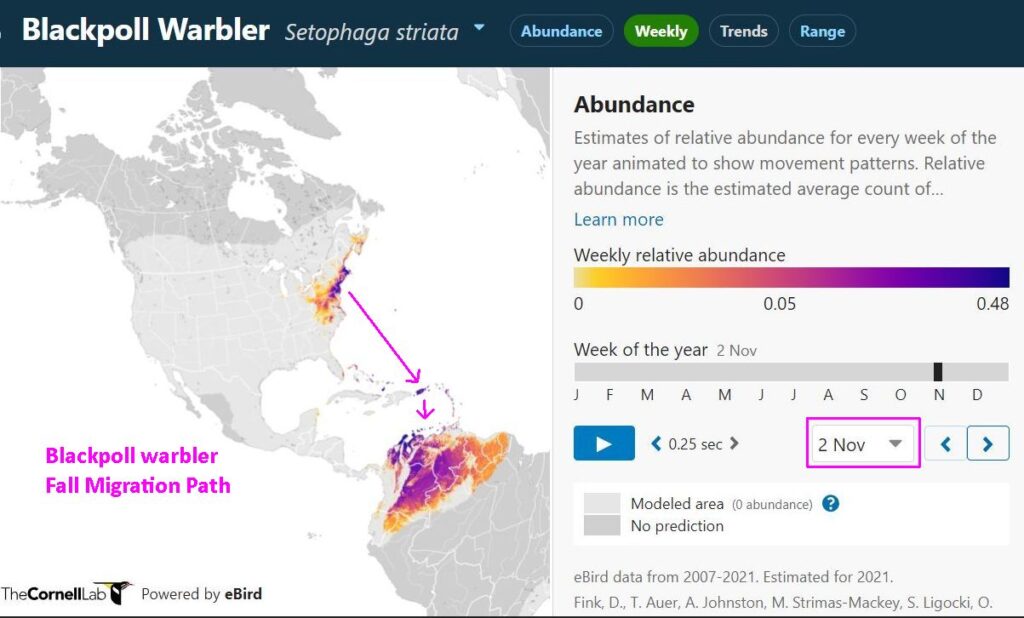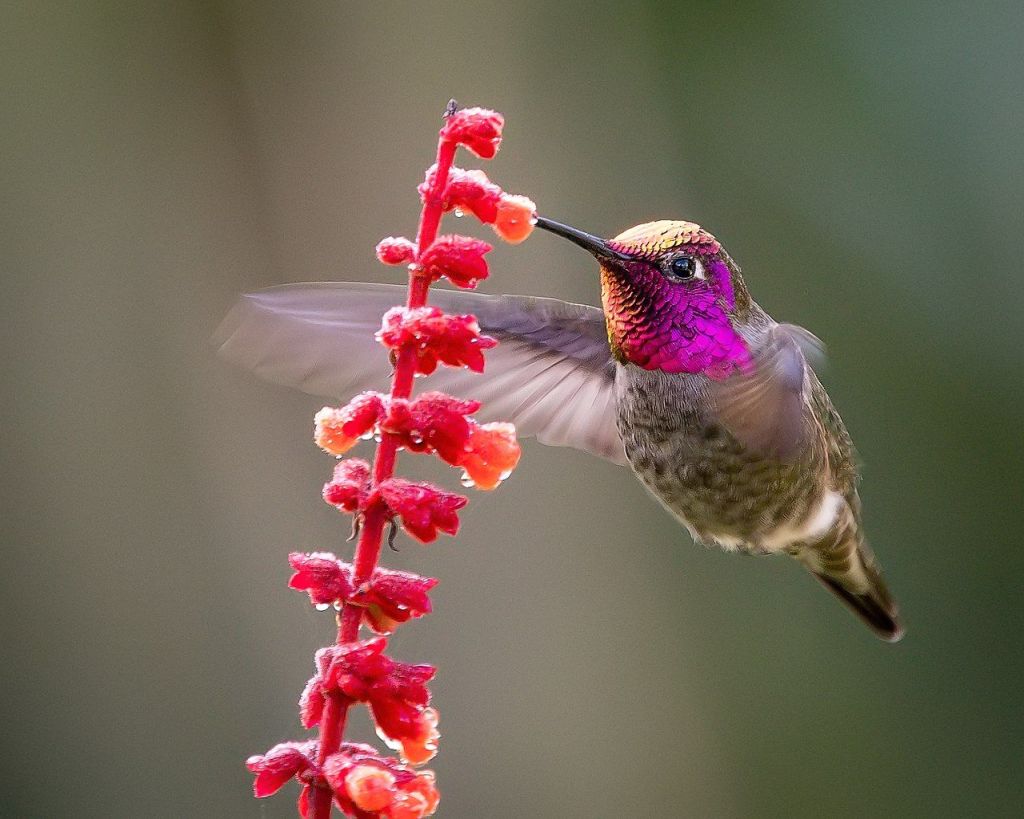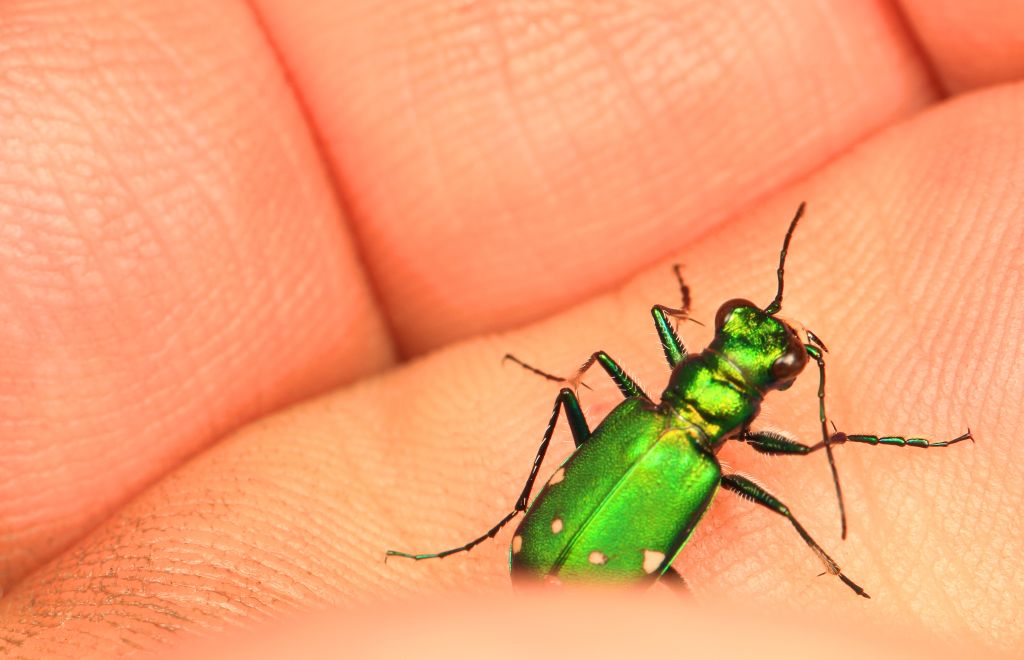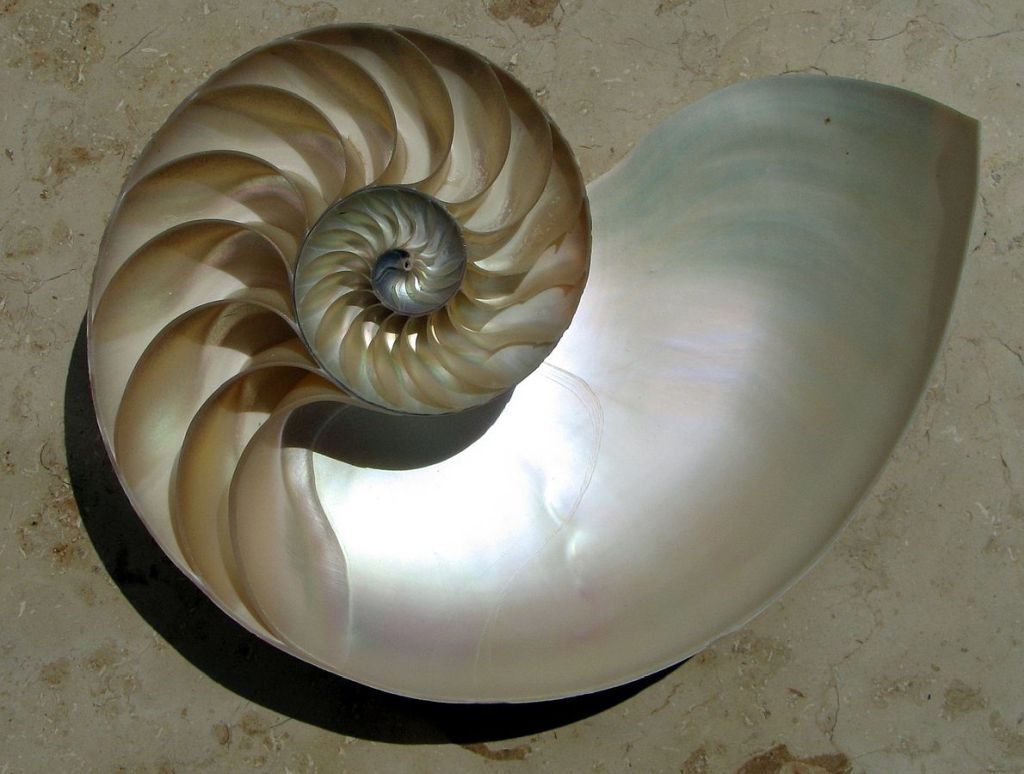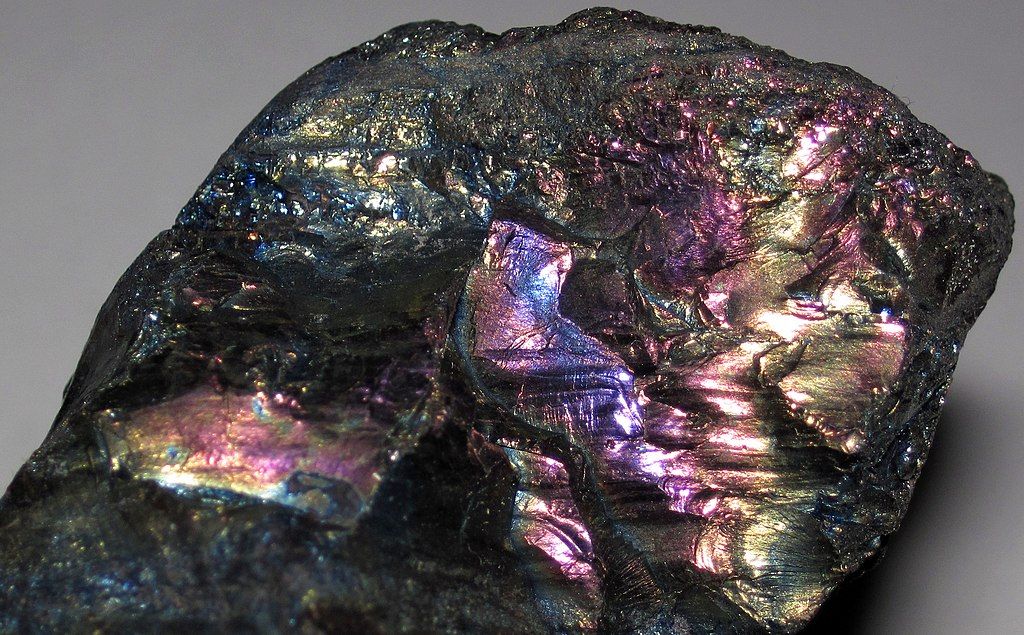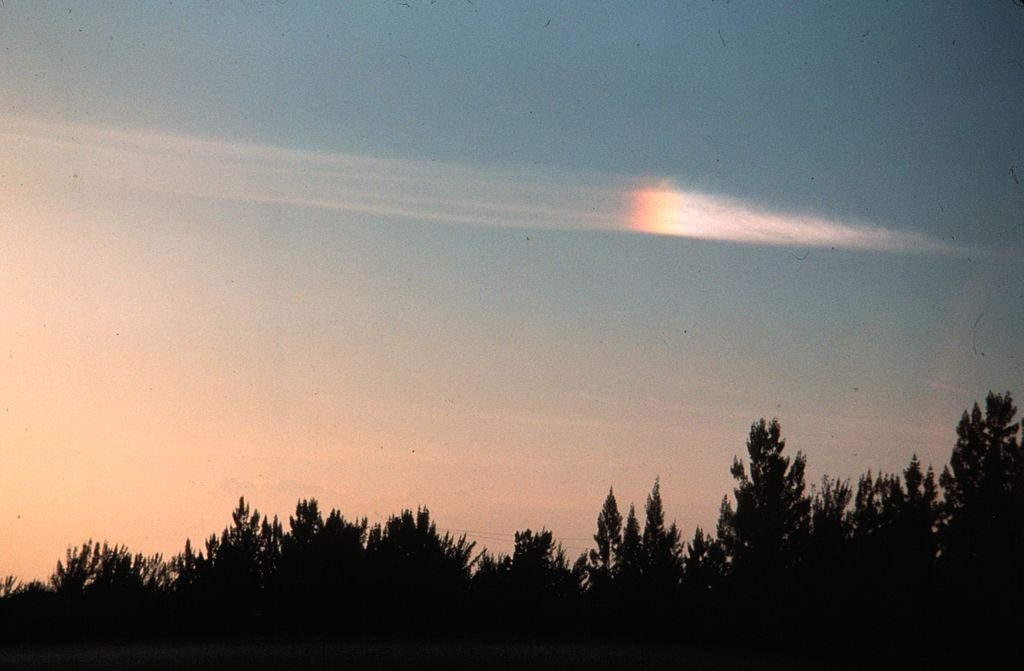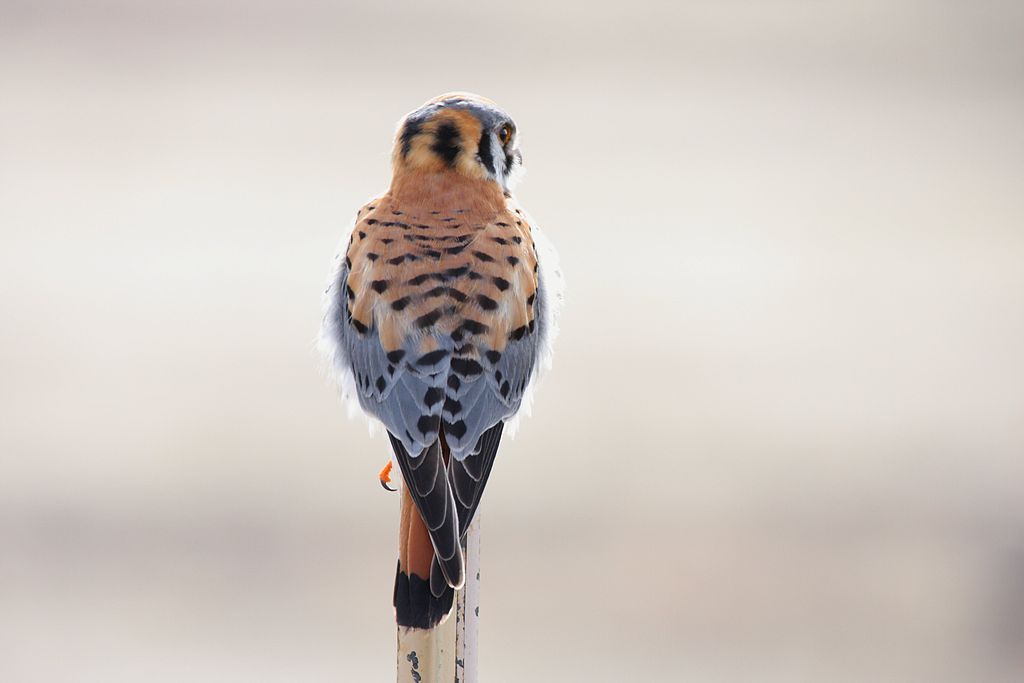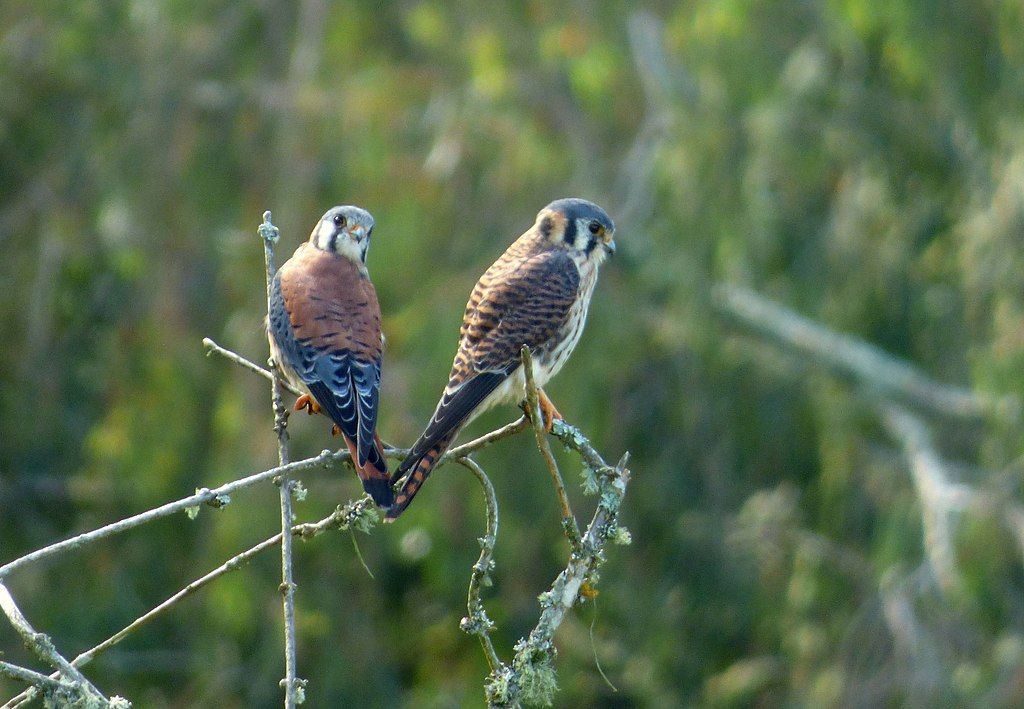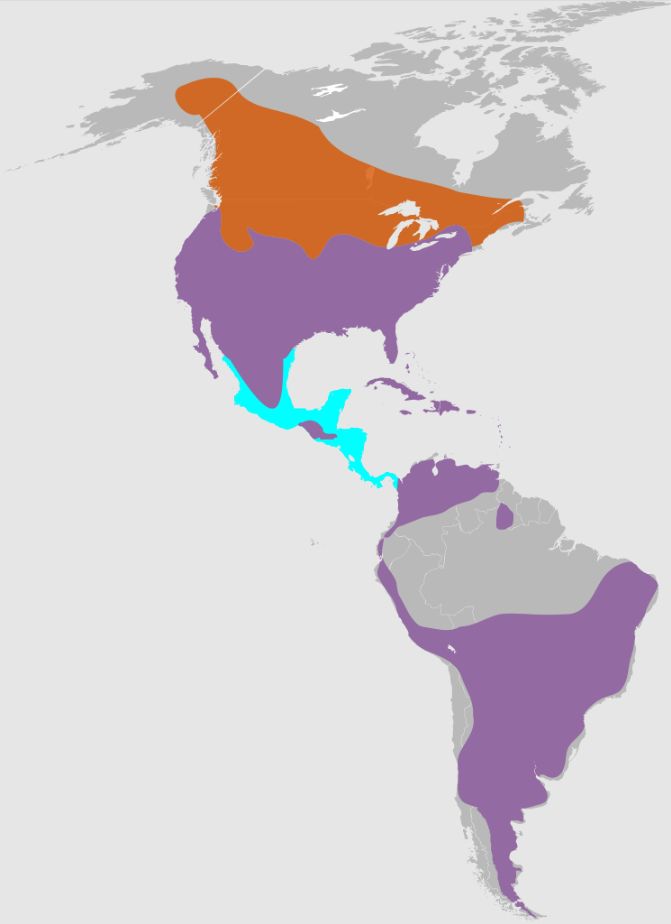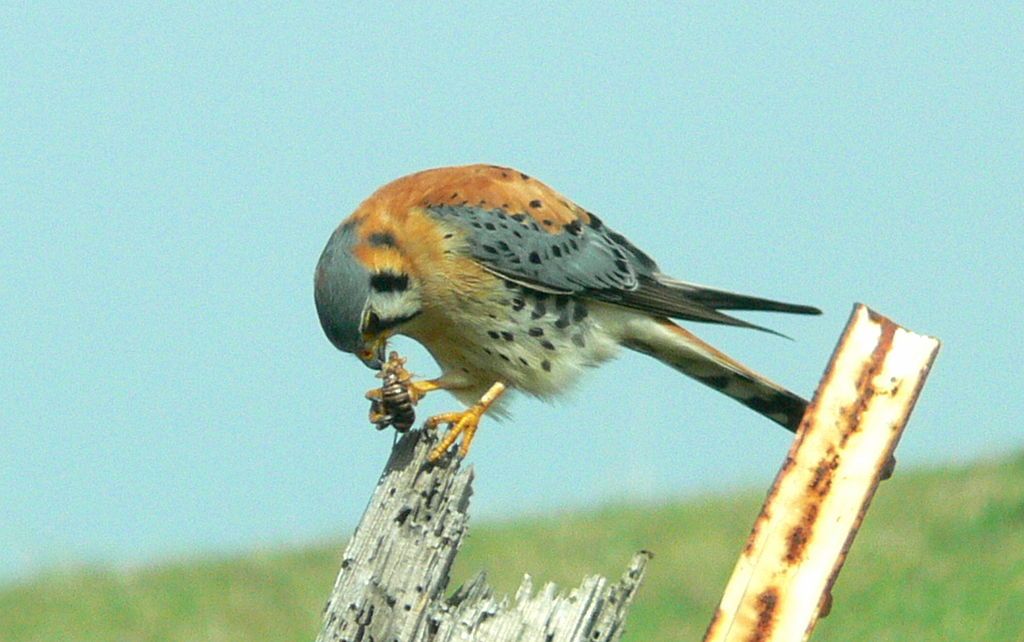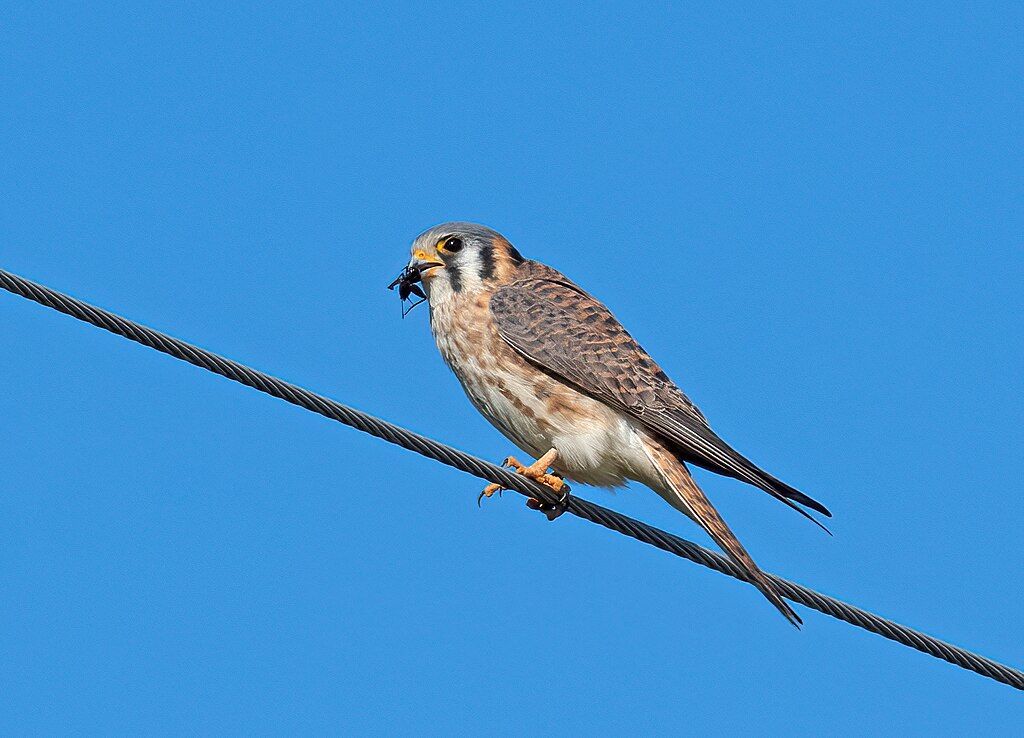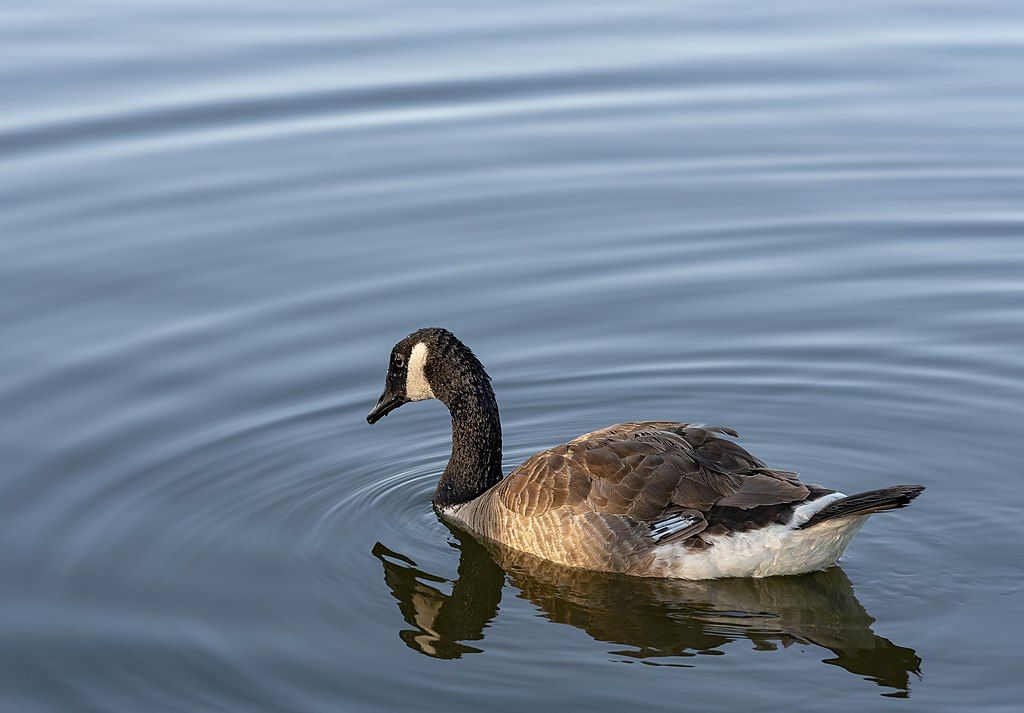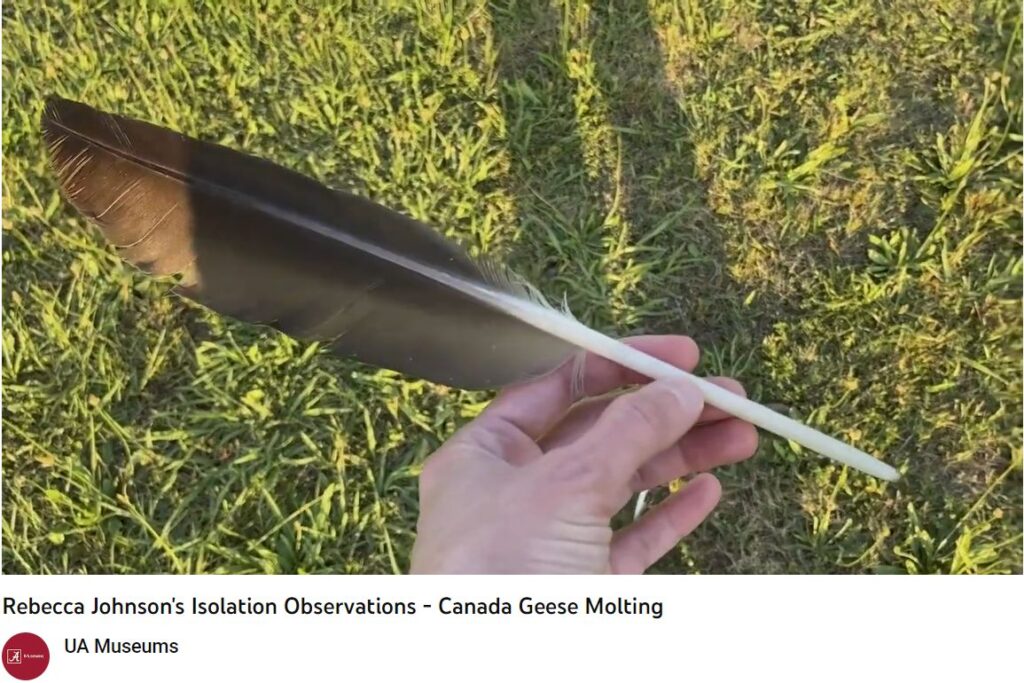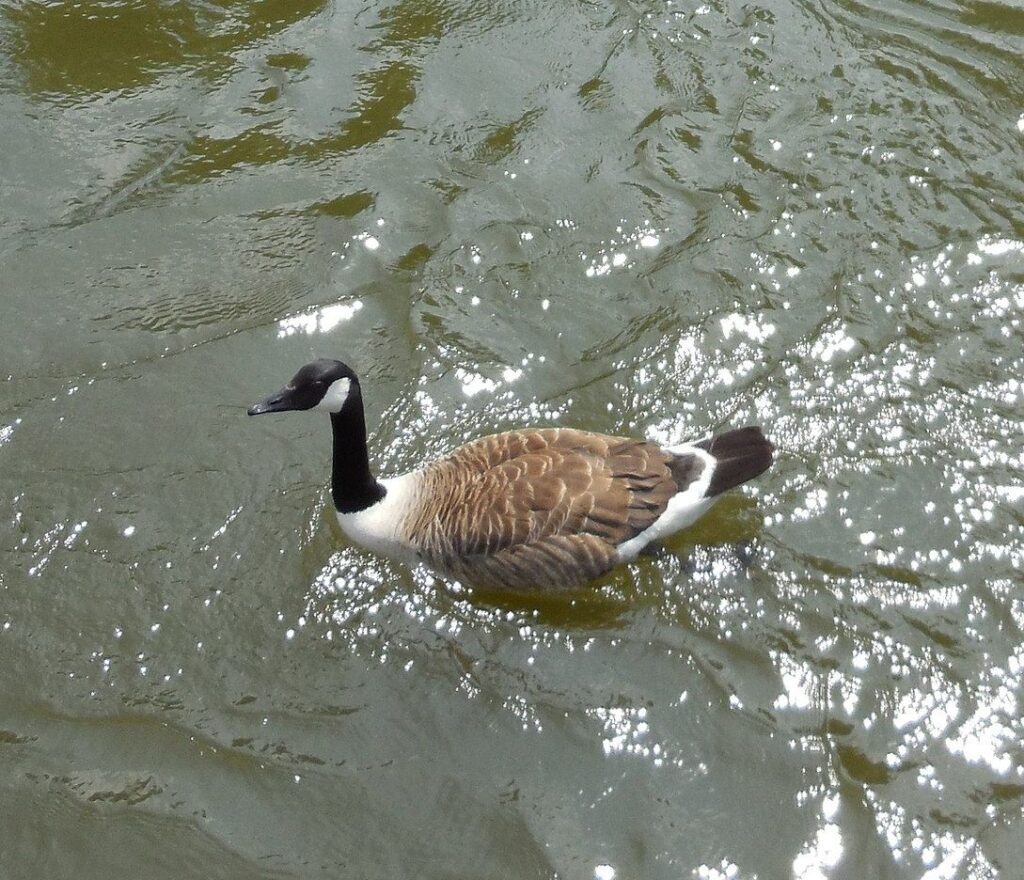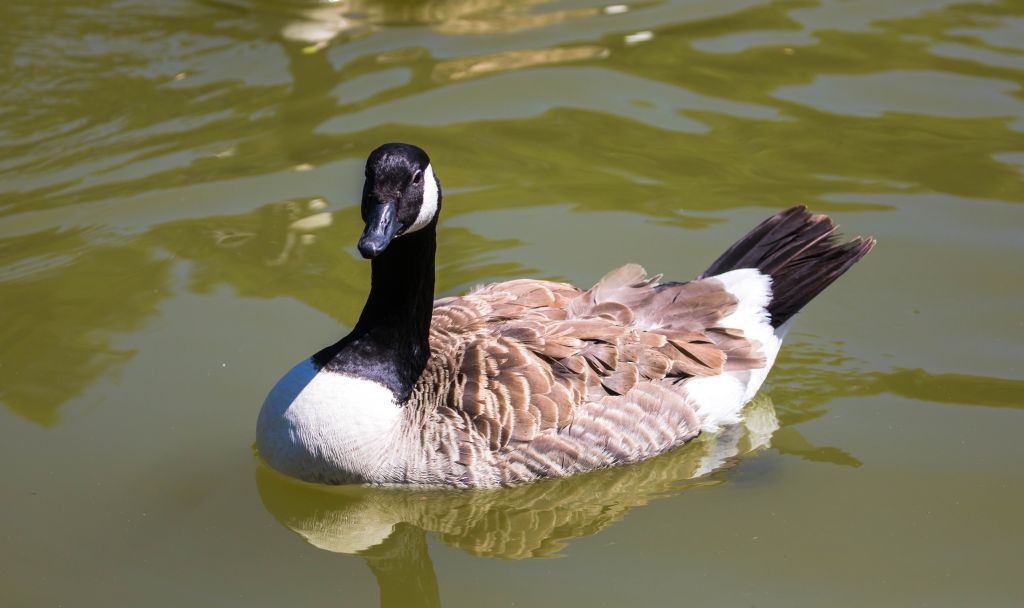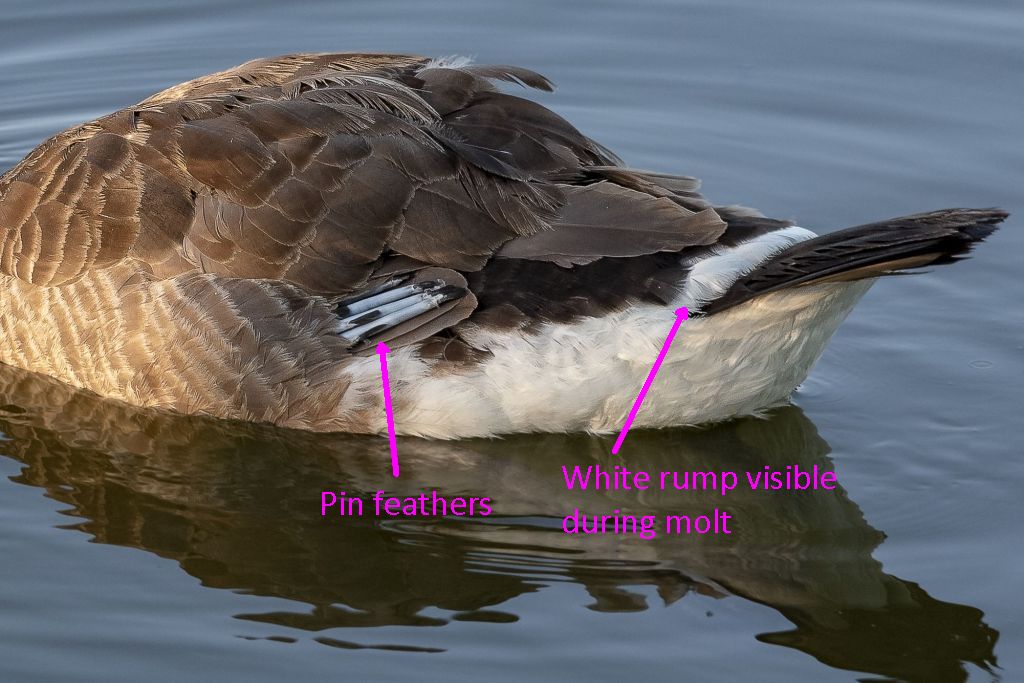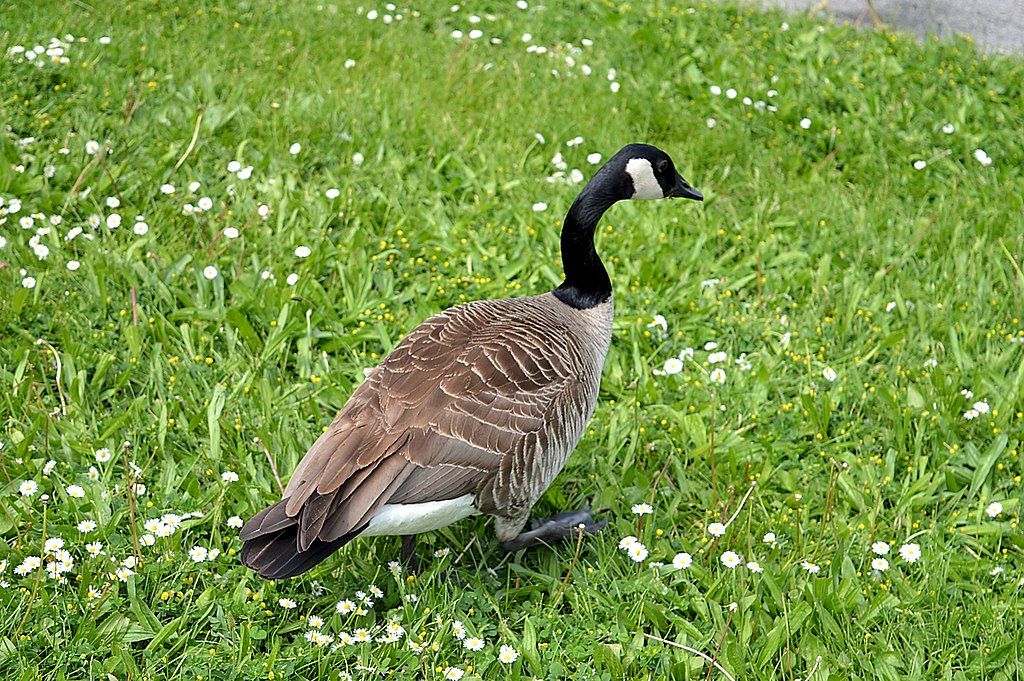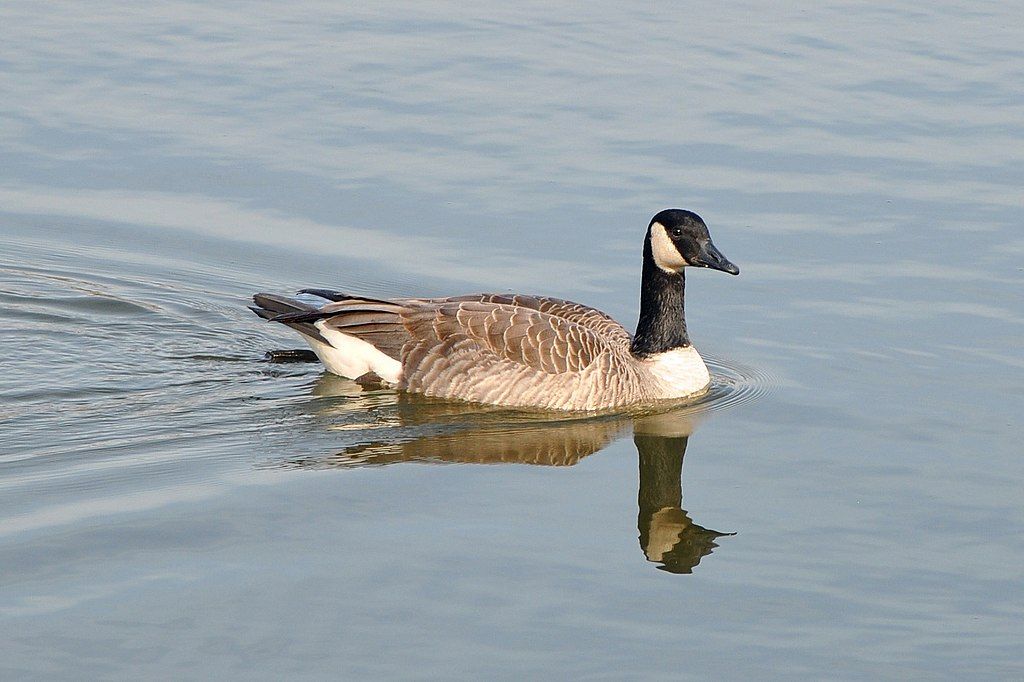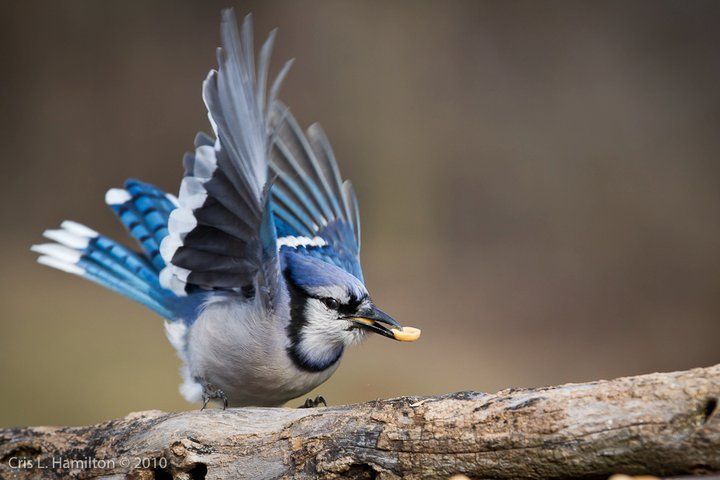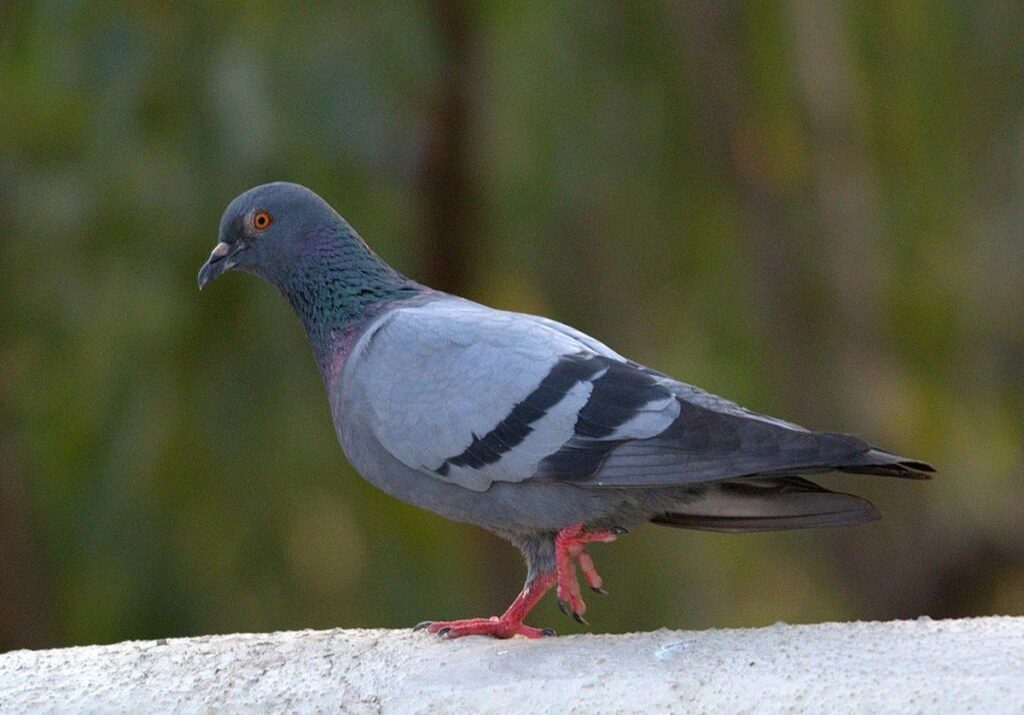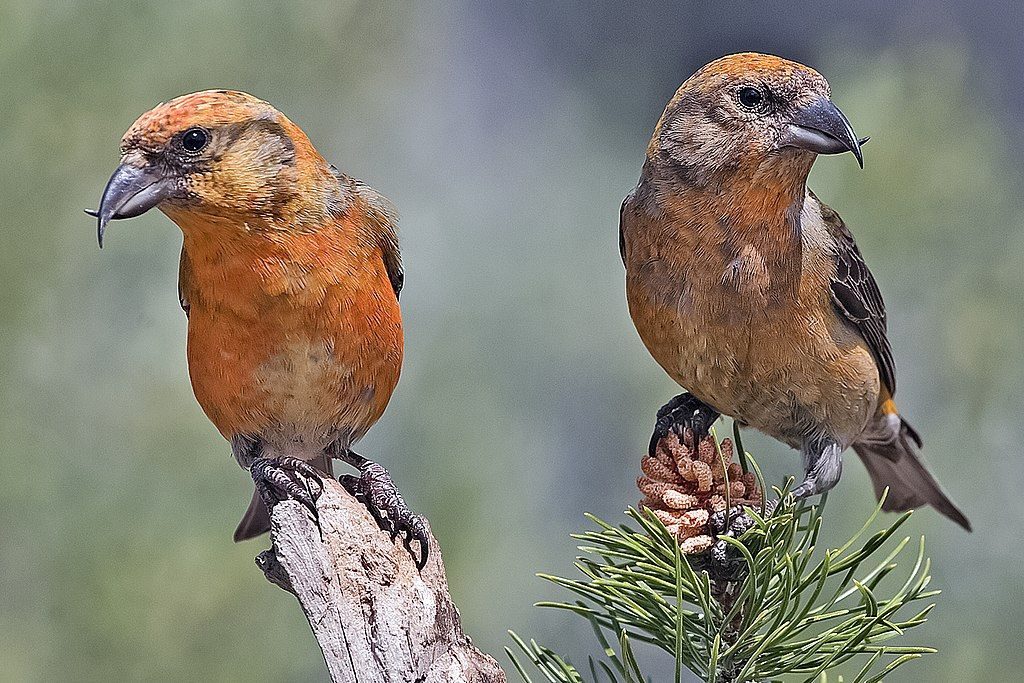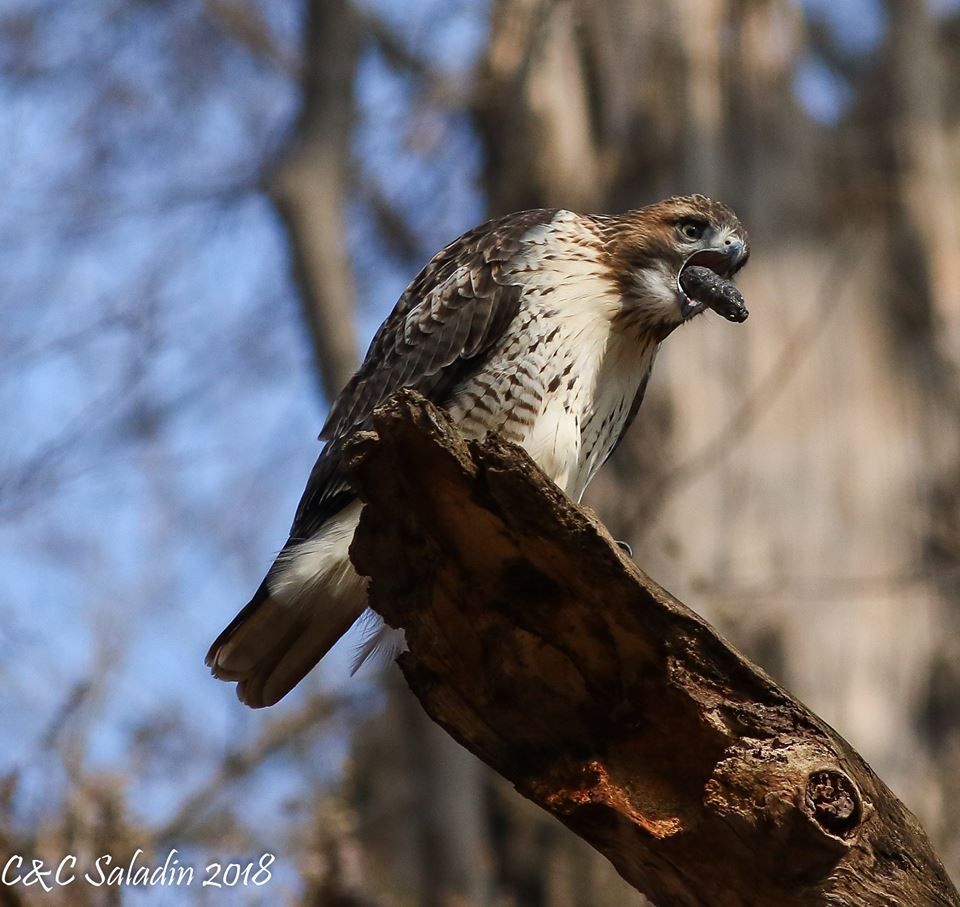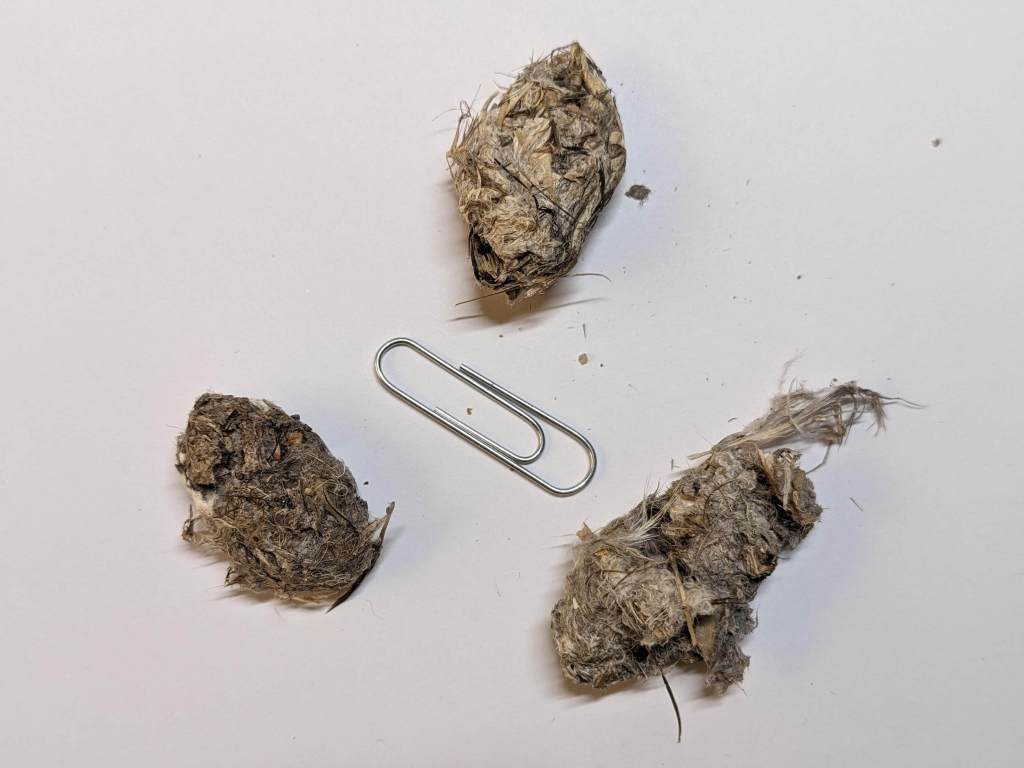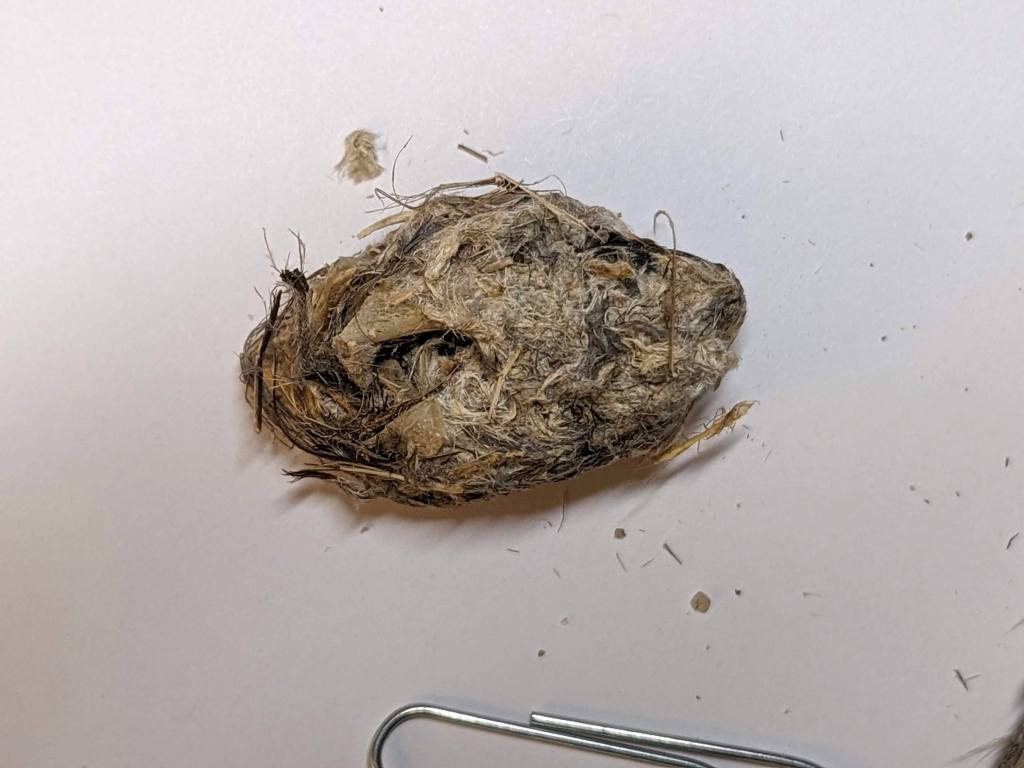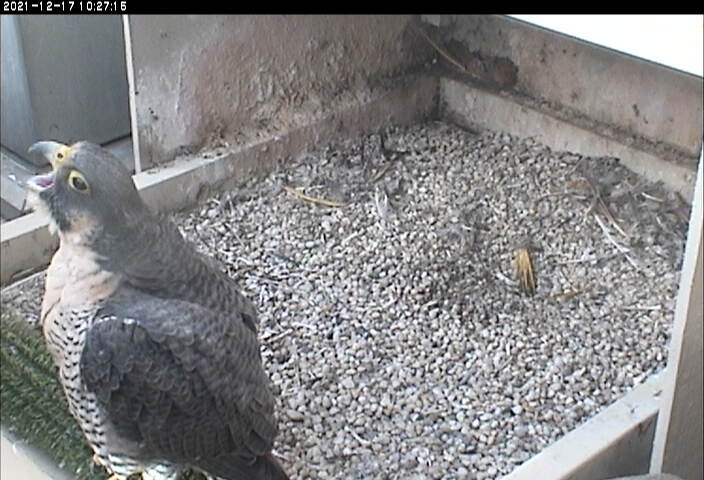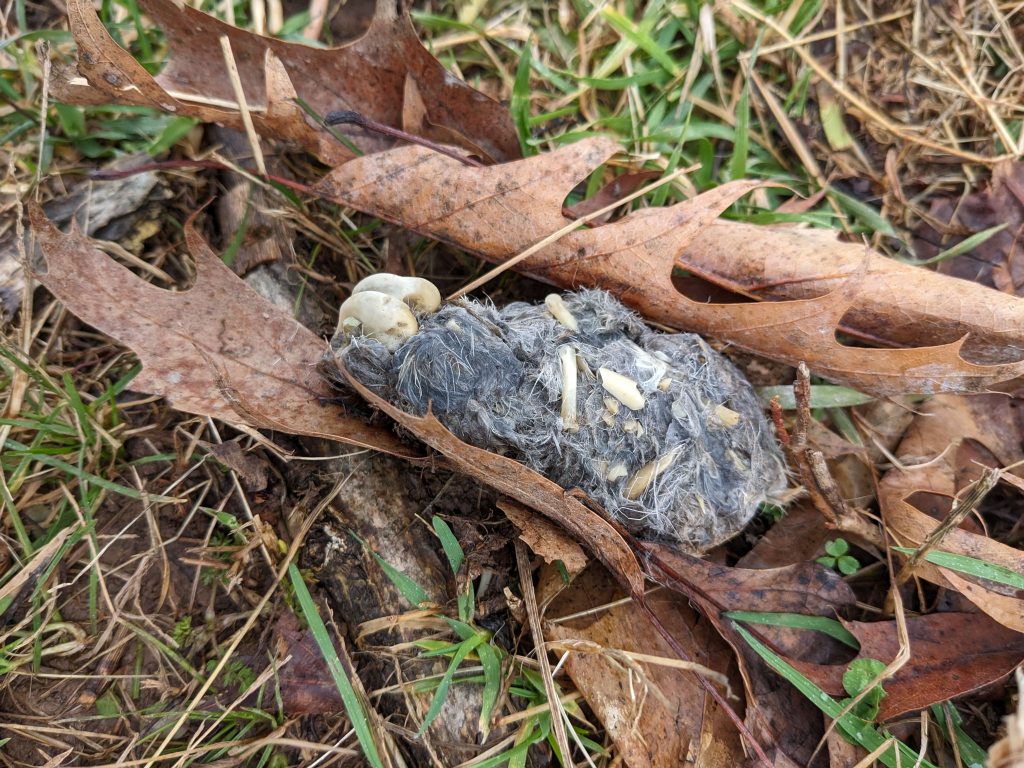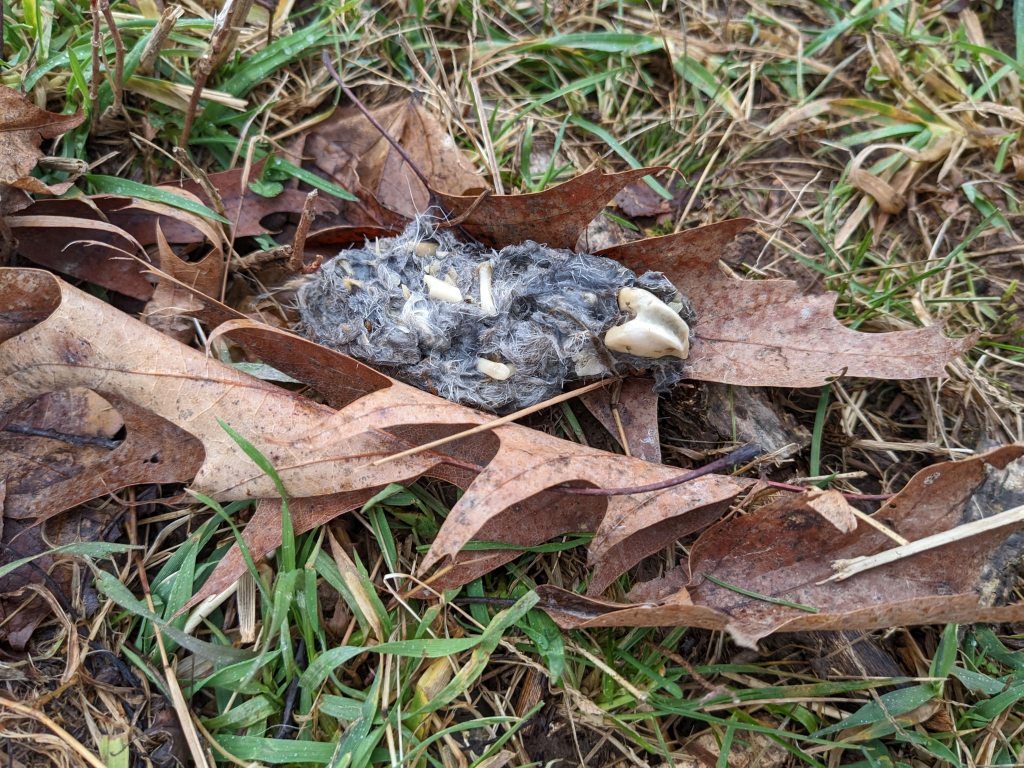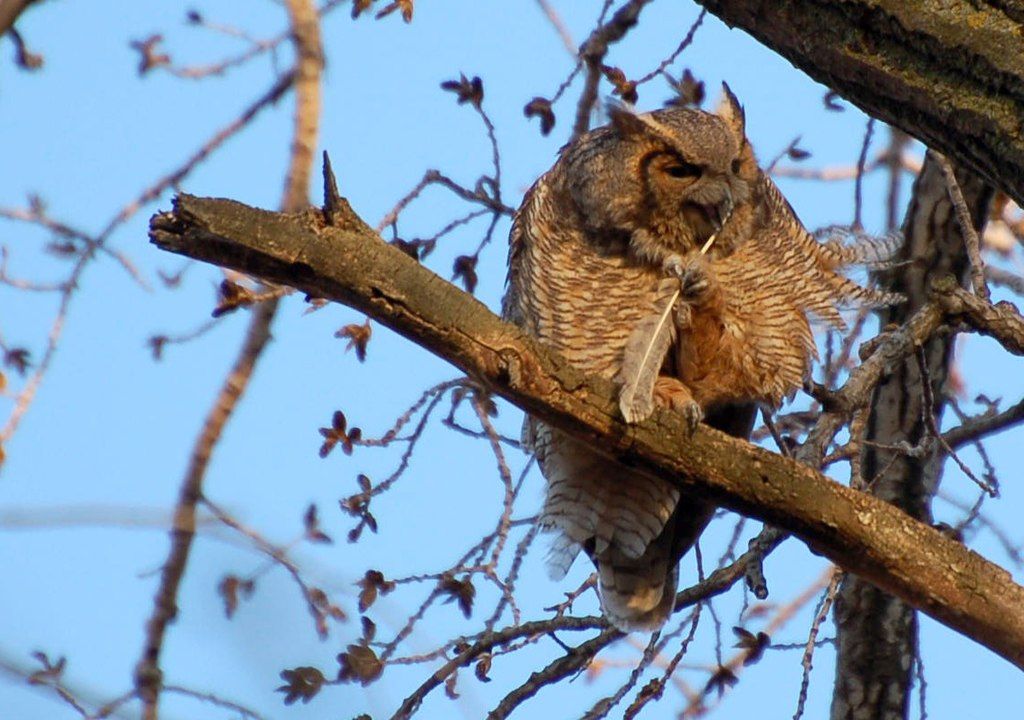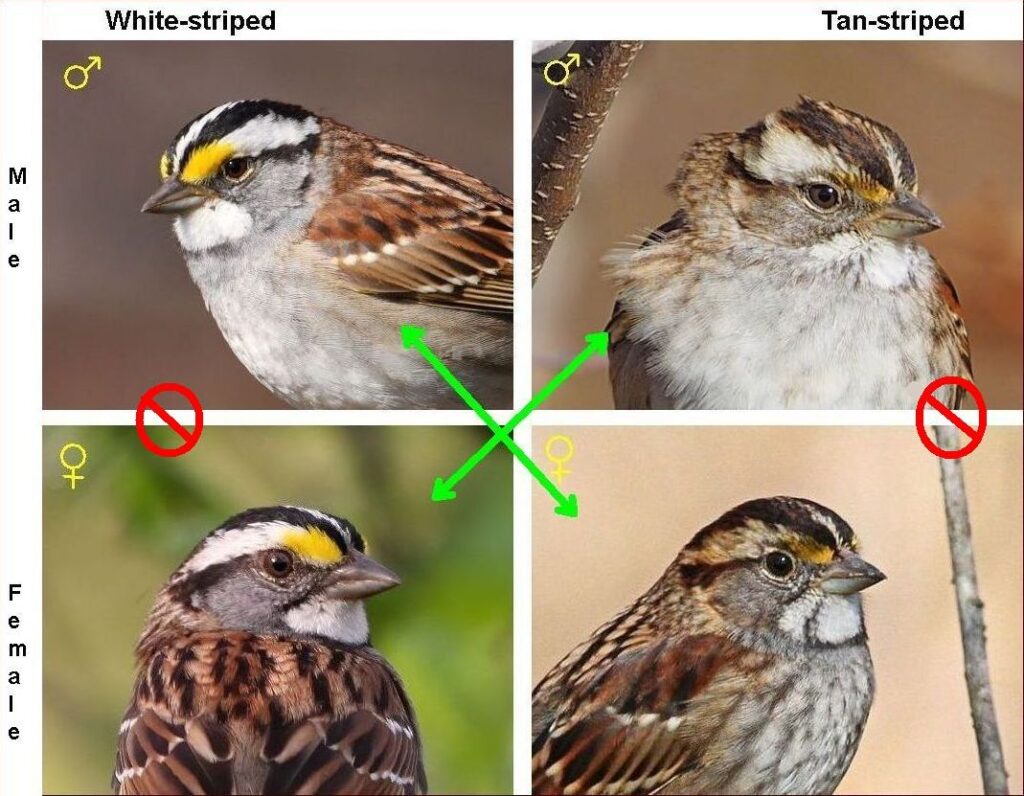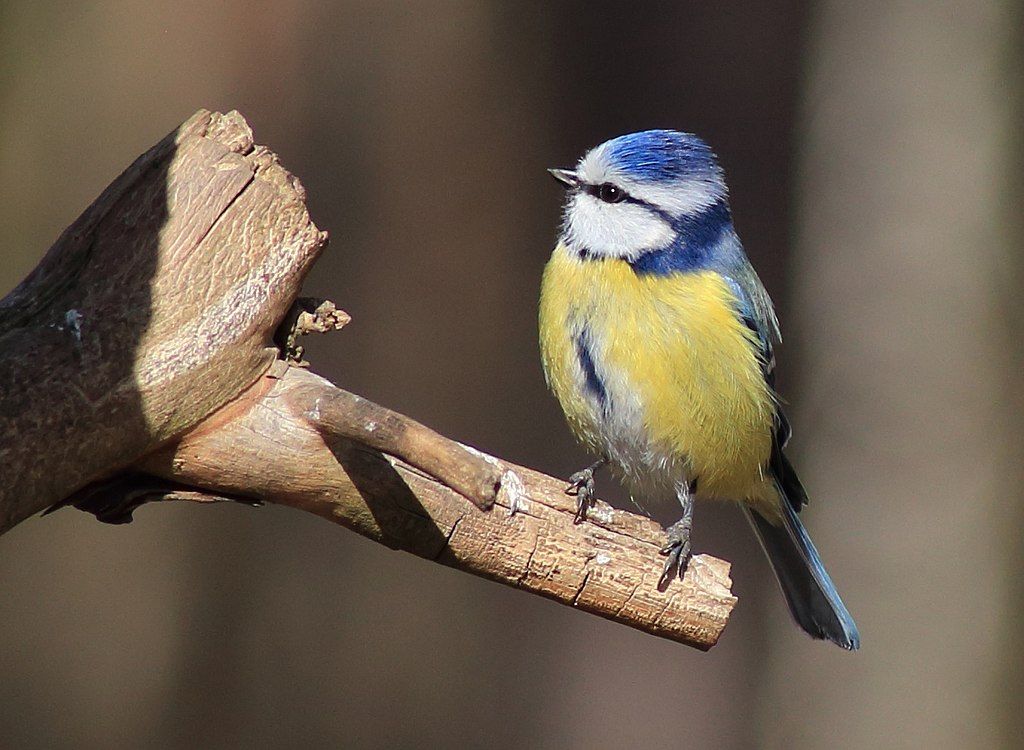
29 October 2023
Though 70% of the songbirds in our field guides have sexes that look the same to us, this isn’t true from the birds’ point of view. Birds can see ultraviolet light (we cannot) and often have plumage differences in the ultraviolet range. With the invention of inexpensive UV viewing equipment, scientists looked at birds and were amazed at what they found. 90% of the species tested had differences between males and females under UV light. We humans just can’t see it.
Eurasian blue tits (Cyanistes caeruleus), shown at top, were one of the first wild birds examined in the ultraviolet range. Both sexes look alike … or do they?
Using a spectrophotometry probe to scan the feathers of wild-caught birds, Andersson and his colleagues discovered that blue tits themselves have no problem telling males from females: Males have a patch of feathers on the crown of the head that strongly reflects UV light; females do not.
— NWF: True Colors: How Birds See the World
This marked up photo gives you an idea of how a male might look if only we could see UV.
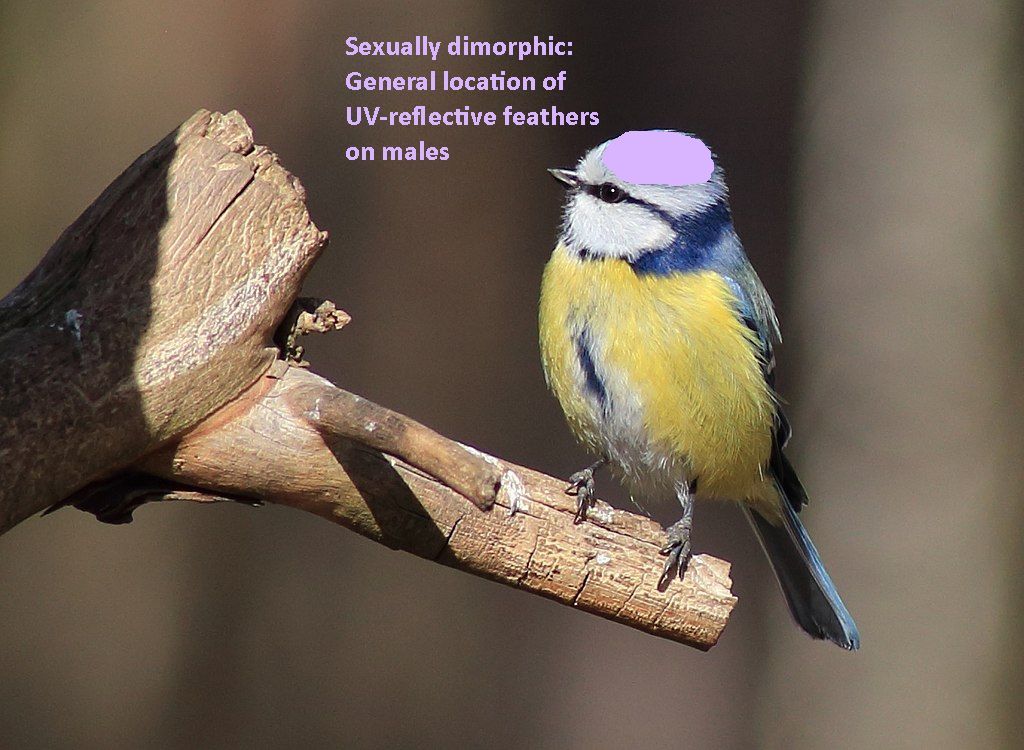
Both sexes of yellow-breasted chats (Icteria virens) look the same from afar, though in the hand the sexes can be distinguished (interior mouth color for instance). A 2004 study, Sexual dichromatism in the yellow-breasted chat, detected that the male’s throat has ultraviolet colors that make it much brighter than the female’s.
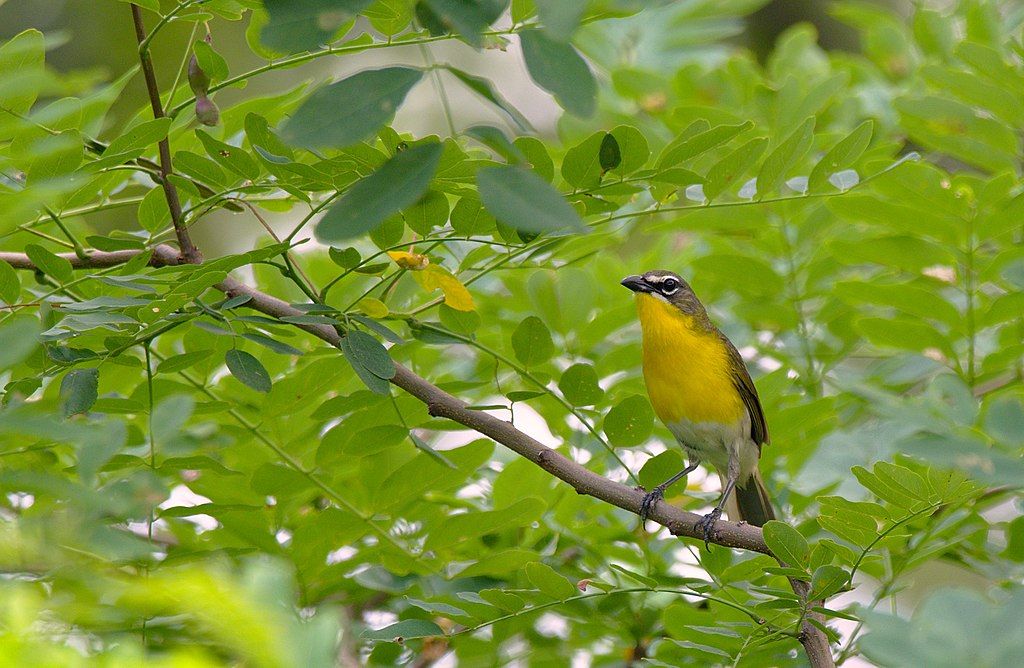
Here’s what it might look like if only we could see it.
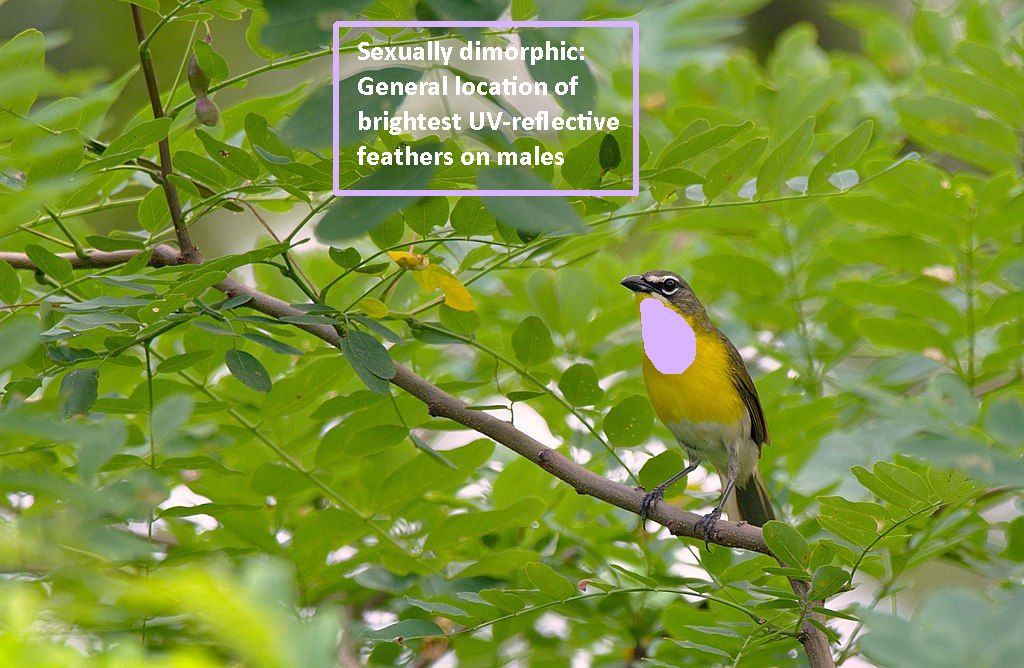
In 2002 scientists studied ultraviolet plumage in picui doves (Columbina picui) of South America. Males and females look much the same to our human eyes but are dimorphic in the UV range.
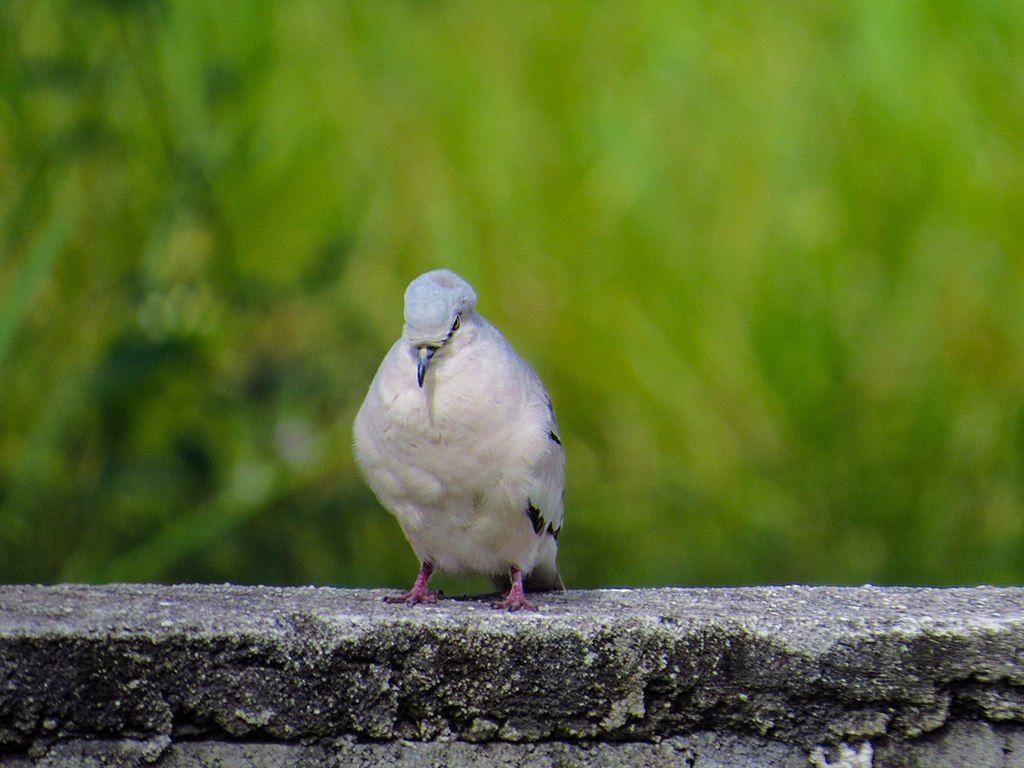
A lady dove sees so much more!
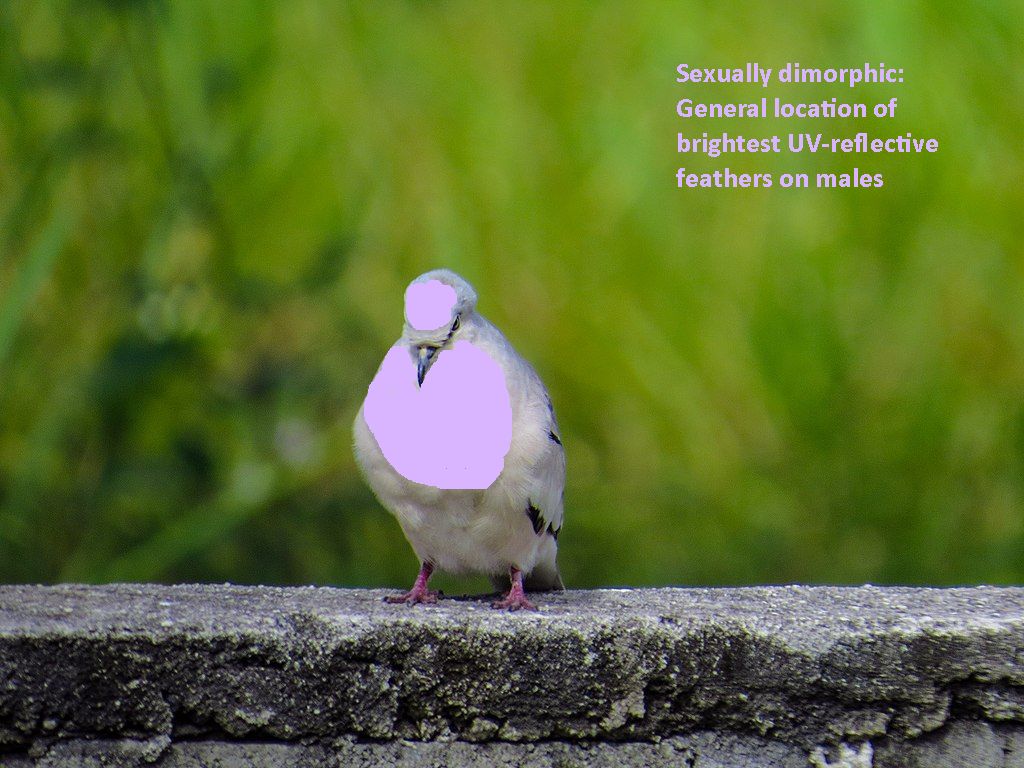
Apparently most birds are sexually dimorphic in ultraviolet including cedar waxwings, barn swallows, mockingbirds and western meadowlarks. According to True Colors: How Birds See The World, biologist Muir Eaton scanned the plumage of museum study skins of 139 songbird species in which males and females appear alike — but they aren’t alike under UV. He concluded, “To the birds themselves, males and females look quite different from one another.”
For more information see:
- Photos of birds showing ultraviolet features at uvbirds.com. (Check out the flamingo!)
- True Colors: How Birds See The World at National Wildlife Federation,
- Taking a Bird’s-Eye View…in the UV: Recent studies reveal a surprising new picture of how birds see the world.
It’s amazing how much we humans are missing.
(credits are in the captions with links to the originals)
